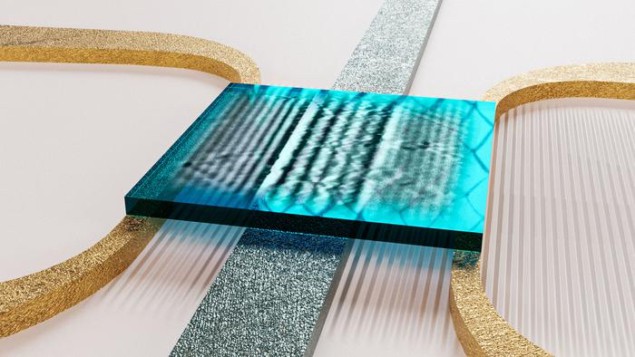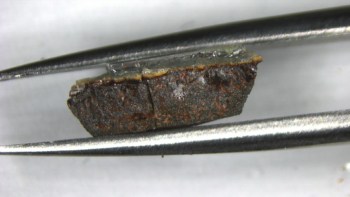
Placing a superconducting electrode on top of a thin magnet makes it possible to manipulate and control so-called “spin waves” within the magnet simply by changing the electrode’s temperature. This result, from quantum physicists at Delft University of Technology in the Netherlands, could advance the development of spintronics devices, which exploit the spin of an electron as well as its charge.
Spin waves are collective oscillations of magnetic order in magnetic materials, and they show much promise for spintronics because they can travel millimetres or even centimetres in some media with very little loss. This means they could transmit electrical signals over long distances while using less energy than conventional electronics. They can also be manipulated to perform many calculations or operations before the signal from them fades out, which is important for practical devices.
The main problem with spin waves is that they are hard to control. However, researchers led by Toeno van der Sar and Michael Borst have now shown that it is possible to do this in a magnetic thin film using a superconductor. In their study, which they describe in Science, they started with a chip covered by a thin magnetic film of yttrium iron garnet (YIG). On top of this film they placed a gold electrode, which they used to excite spin waves in the YIG. They then placed a superconducting electrode next to the gold electrode and studied how the spin waves travelled underneath it.
Controlling where and how the spin waves propagate
While theory predicts that normal (non-superconducting) metal electrodes should be able to control the wavelength and propagation of spin waves, the group’s previous work revealed that such electrodes “primarily dampen out spin waves and don’t provide this control at all”, Borst explains. He and his colleagues were thus very interested to find out whether a superconductor would give a different result – which it did.
“For the electrode to become superconducting, we cooled the chip to below 9 K and when it became so, we suddenly observed a dramatic change in the spin wavelength,” Borst says. “We found that by changing the temperature of the electrode, we could accurately tune this wavelength. And by creating a temperature gradient in the electrode, we could control where and how the spin waves propagate.”
Monitoring propagation
One major challenge the team had to overcome was finding a way to monitor how spin waves propagate under the electrode. This is not an easy task, but the researchers addressed it by creating a unique magnetic field sensor based on electron spins in diamond that allows them to observe the spin waves directly. “This is a powerful technique that will surely come in useful for characterizing more complex metal-covered spin-wave devices in the future,” Borst tells Physics World.
According to the Delft University of Technology team, the new work could make it possible to create many kinds of spin-wave circuits and devices, such as on-chip spin-wave cavities, spin-wave reflectors and spin-wave gratings.

Frequency multiplication of spin waves to gigahertz frequencies achieved in simple material
“Interestingly, we can also learn about important properties of the superconductor by studying these waves,” Borst says. “Indeed, we have demonstrated this by mapping one such fundamental parameter, the superconductor’s London penetration depth (the depth at which an external magnetic field penetrates into a superconductor), as a function of temperature.”
Looking forward, the researchers are now working out ways of developing real-world spin-wave devices and studying how the superconductor interacts with different types of spin waves. “We would also like to further our control over spin-wave propagation by introducing complex temperature gradients in the superconducting electrode,” Borst says.



